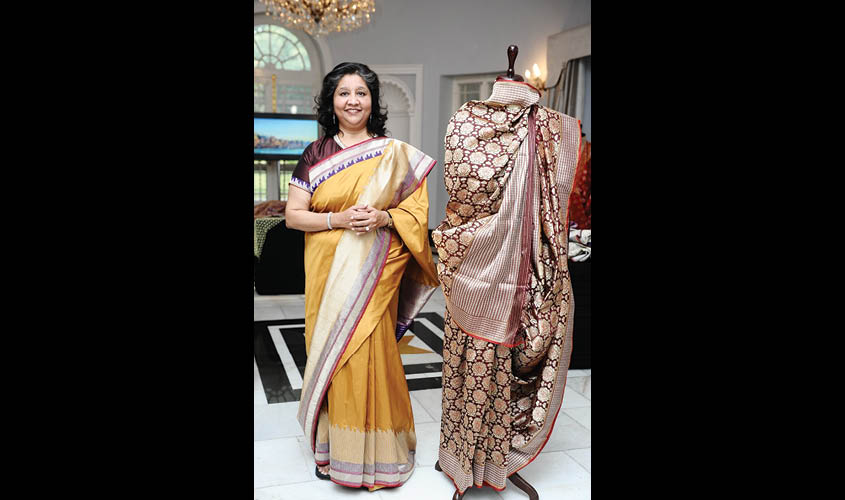A Mumbai-based handloom revivalist and designer, Smriti Morarka has been working tirelessly to promote Benaras’ rich tradition of weaves through her brand Tantuvi. Her endeavours have, among other things, brought the Banarasi saree to the very forefront of world fashion.
Last month, the Turkish Embassy in New Delhi invited Morarka and her team of artisans from Benaras, to celebrate the art of handloom, cherished in both India and Turkey. The designer exhibited hand-woven saris from her brand at an event hosted at the residence of the Turkish Ambassador to India.
According to Morarka, the exhibition was intended to introduce guests to “the Banarasi process of weaving” and make them aware of “the hands that work on the looms and the mind that plans the context of the textile”. Also screened at the exhibition was a three-minute trailer of the documentary film titled Bunkar: The Last of the Varanasi Weavers, which premiered as part of the “Indian Panorama” segment at the International Film Festival of India in Goa earlier this year.
For the last 21 years, Morarka has been closely working with the Banarasi weavers. She spoke to Guardian 20 about her association with artisans: “When I started working on such designs these were not tested at all. I realised that the younger generation was working on it far more constructively than our heritage weavers. That was the time when I made a foray into this space because of the dismal condition of the weaving community. And it was more like an internal churn. I didn’t know what I was going to do with it and I didn’t know if I had it in me, because I had no training as a textile designer. I am a student of history, and I am here to help keep this history alive. So the entire approach was not from the textile designing point of view. It was more to preserve the heritage.”

Morarka’s focus is on making timeless garments and she is devoted to this idea as a designer. She said, “Why can’t we make things which look aesthetic and are timeless? The pieces should be such that 20 or 50 years fifty years down the line you can still relate with those. Why do we make things, which in two years make you think they are not worthy at all? We are trying to bring in that permanence with our designs.”
There are various challenges she faced while working with the weavers. “Initially I was looked down upon with a lot of trepidation and distrust, because what often happens is that designers go to weavers, they get their stuff made for one or two seasons, and then they disappear. Due to this, the local artisans who once worked for big designers are left with no work, and traders begin to look upon these artisans with suspicion,” Morarka said.
It is a common practice for most designers to sell the products they take from regional weavers at a much higher price. But Morarka’s model is different. She believes in giving the weavers their rightful due. She said, “My model is different. The saris of my brand are priced at Rs 50,000 and above. Earlier, the typical system in Benaras was that there were traders. These traders supplied designs to the weavers and they would provide them with a little bit of the raw material cost as an advance. Then the weavers would make the product and when the traders got these products back they would bargain and pay as little to the weavers, while profiting themselves by selling the products at top prices.”

At the Delhi event
Morarka wasn’t guided in her project by prospects of professional enchainment. She was turning her passion into a professional when she took up this endeavour, aimed at restoring the Varanasi weave to its original grandeur. She said, “I don’t think it is an intelligent business idea. It’s actually bad commerce, but because of God’s grace I come from an economic background where I can afford to be romantic about what I do.”

